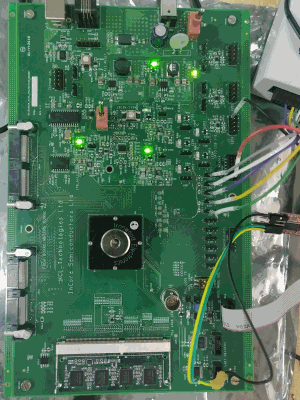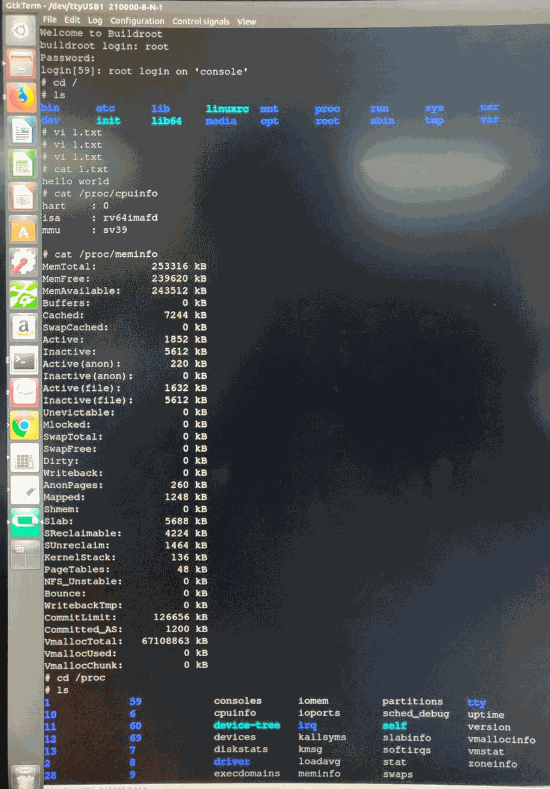Engineering Tidings: Shakti Microprocessor Plan
Shakti microprocessor program
The SHAKTI Processor Program was started every bit an academic initiative dorsum inwards 2014 past the RISE grouping at IIT-Madras. Realizing the limitations of the processor industry mentioned higher up, the inaugural aimed at non only creating open up-source industrial course processors just as well building associated components of a bigger eco-arrangement - similar interconnect fabrics, scalable verification platforms, peripheral IPs, etc. - which enables rapid adoption of the processors. Some of the major highlights of the programme which go far a viable pick for adoption are:
 For those of yous who are non familiar, RISC-V is an open ISA (Instruction Set Architecture) developed as a project inward 2010 by the University of California, Berkeley. First of all, an teaching fix is but the gear up of commands given to a CPU in car linguistic communication. Basically, it tells the CPU what it needs to do like, for example, add or compare.
For those of yous who are non familiar, RISC-V is an open ISA (Instruction Set Architecture) developed as a project inward 2010 by the University of California, Berkeley. First of all, an teaching fix is but the gear up of commands given to a CPU in car linguistic communication. Basically, it tells the CPU what it needs to do like, for example, add or compare.  Currently clocking at 400MHz, DMIPS/MHz – one.67, this isn’t by any agency outclassing raspberry Pi operation (nor does it mean to). It is a examination bit taped-out on Intel’second 22nm FinFET Technology. Furthermore, the fact that Linux was able to boot presents a proof of concept of design by which the projection team could further act towards more product-class SoC designs.
Currently clocking at 400MHz, DMIPS/MHz – one.67, this isn’t by any agency outclassing raspberry Pi operation (nor does it mean to). It is a examination bit taped-out on Intel’second 22nm FinFET Technology. Furthermore, the fact that Linux was able to boot presents a proof of concept of design by which the projection team could further act towards more product-class SoC designs. 
The SHAKTI Processor Program was started every bit an academic initiative dorsum inwards 2014 past the RISE grouping at IIT-Madras. Realizing the limitations of the processor industry mentioned higher up, the inaugural aimed at non only creating open up-source industrial course processors just as well building associated components of a bigger eco-arrangement - similar interconnect fabrics, scalable verification platforms, peripheral IPs, etc. - which enables rapid adoption of the processors. Some of the major highlights of the programme which go far a viable pick for adoption are:
- Source code of all the components of the SHAKTI eco-organization is open up nether the iii office BSD license. This way a user could freely use, change in addition to circulate the source code without having to sign whatsoever NDAs, licenses or even notify the authors as long equally the license header file remains. The SHAKTI program itself volition non assert whatsoever patents together with thereby removes the burden of paying royalties likewise.
- The processors of the SHAKTI eco-system are construct using the open-origin RISC-V ISA. RISC-V has been designed for modularity together with extensions, thereby perfectly plumbing fixtures the prologue of "customization". The ISA likewise comes amongst a complete software stack, including compilers, operating systems, together with debuggers, which are open rootage in addition to hence also modifiable. Since the ISA does non dictate micro-architectural features, the software in addition to hardware tin can live maintained by two consummate dissimilar entities too however live compatible. This allows for corking re-usability too sharing of code-base of operations across the community.
- The SHAKTI processors too the forepart-end (RTL) designs are developed using the open-rootage High Level Synthesis (HLS) language: Bluespec System Verilog (BSV). BSV equips the user to train extremely modular as well as parameterized modules alongside defined interfaces. This feature facilitates the user to focus in addition to change solely the designs of interest without having to suspension the residual of the menses. Today at that place exists a gratuitous bsv-parser which the community tin role to prepare open/proprietary compilers for BSV.
- Academia immediately has access to a real earth working prototypes of processors which they can play with for free. This enables them to depart from the earth of "simulators" too "emulation models" together with try out their enquiry and ideas inward practise. They are no longer tied downwards past strict NDAs on publishing as well as tin thereby participate more than actively inwards shaping the futurity of the processor industry.
- A typical procedure of acquiring ISA or architectural licenses from companies similar ARM tin can vary anywhere between half dozen-12 months. This increases the time-to market for the consumers. SHAKTI, can immensely cut back this fourth dimension by avoiding such formalities too providing a powerful modular framework allowing minor tech beginning-ups to entirely modify components of interest rather than edifice a solution from scratch.
- With minds from all over the community pouring inward ideas as well as solutions, SHAKTI has the potential to get a country-of-the-fine art offering quickly
- An open-source eco-system such as SHAKTI promotes a mix-and-tally environment where users can plug-inward different open up-root or proprietary IPs as well as innovate on new ideas too projects.
- Being completely open-root, it is close-to-impossible for external entities to add together dorsum-doors and black-boxes. This is of item involvement to strategic sectors of countries like Bharat, which today depend on dark-box solutions provided past industries which are headquartered inwards foreign countries.
- SHAKTI tin can likewise enable the software community drastically. Fearing potent patent lawsuits, software developers who ain licensed HW IPs for evolution are forced to release solely binaries rather beginning code as well as also provide minimal documentation. This leaves the software Libre community inwards dangling country, spending months in addition to even years \emph"picking up pieces".
RISC-V
 For those of yous who are non familiar, RISC-V is an open ISA (Instruction Set Architecture) developed as a project inward 2010 by the University of California, Berkeley. First of all, an teaching fix is but the gear up of commands given to a CPU in car linguistic communication. Basically, it tells the CPU what it needs to do like, for example, add or compare.
For those of yous who are non familiar, RISC-V is an open ISA (Instruction Set Architecture) developed as a project inward 2010 by the University of California, Berkeley. First of all, an teaching fix is but the gear up of commands given to a CPU in car linguistic communication. Basically, it tells the CPU what it needs to do like, for example, add or compare. Due to their lower power consumption, ARM (Advanced RISC Machine) didactics gear up-based chips accept dominated smartphone, tablets as well as other small-scale device markets. Shakti is The RISC-V based processor that has been designed amongst pocket-sized, speed, as well as low-ability consumption inwards listen.
Performance
 Currently clocking at 400MHz, DMIPS/MHz – one.67, this isn’t by any agency outclassing raspberry Pi operation (nor does it mean to). It is a examination bit taped-out on Intel’second 22nm FinFET Technology. Furthermore, the fact that Linux was able to boot presents a proof of concept of design by which the projection team could further act towards more product-class SoC designs.
Currently clocking at 400MHz, DMIPS/MHz – one.67, this isn’t by any agency outclassing raspberry Pi operation (nor does it mean to). It is a examination bit taped-out on Intel’second 22nm FinFET Technology. Furthermore, the fact that Linux was able to boot presents a proof of concept of design by which the projection team could further act towards more product-class SoC designs. According to manufacture analysts, RISC-V based chips such equally Shakti could be major players inward IoT, in addition to AI with an extensive ecosystem is inwards place.

The Processor variants are of half-dozen categories amongst 1 Microcontroller (C Class) as well as five Processors (I, G, south, H, T Classes).

Members of the Shakti Processor Team : G. S. Madhusudan, Vishvesh Sundararaman, Arjun Menon, Vinod Ganesan, Shankar Raman, Neel Gala, Deepa N Sarma, Gopinathan K., Rahul Bodduna

Post a Comment
Post a Comment